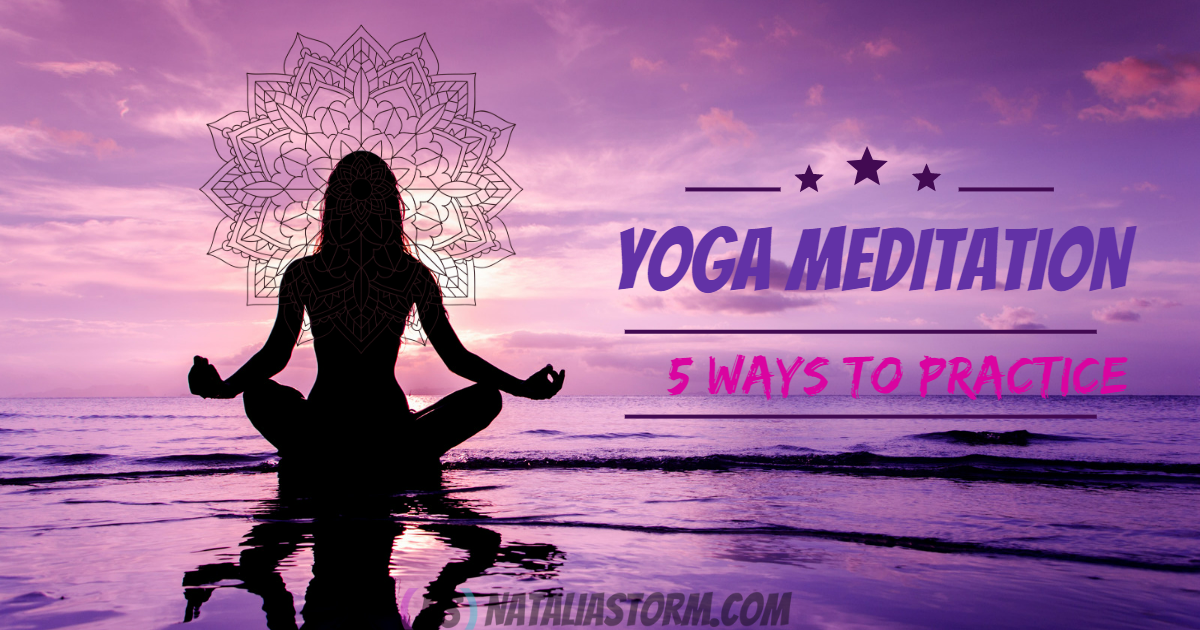Yoga is not only a physical exercise, but it is also a spiritual practice. If you want to get closer to your true nature, yoga meditation is one of the ways. Below you can find ideas on how to practice.
What is Yoga Meditation?
Yoga Meditation is a practice of mindfulness that promotes mental clarity and physical health. It also helps in promoting positive emotions and feelings.
The word “Yoga” comes from the Sanskrit language and is a term that means union. Yoga is a form of meditation that involves breathing and physical postures.
During a yoga meditation, the focus is on the breath, an object, or a sound. Breathing correctly during yoga requires that you breathe deeply and fully. This is the way to achieve the fifth principle of yoga: unity of body, mind, and soul.
The concentration on the breath, a sound, or an object allows you to reach a deep level of realization. A sustained state of pure awareness is known as Samadhi.
In order to reach this stage, you need to meditate on a daily basis. You can start with five minutes per day. As you build up your strength, you may want to increase the length of your yoga meditation.
The ultimate goal of life is happiness. Happiness is experienced in the present moment. There is nothing more meaningful than living a happy, healthy, and joyful life. However, the world around us is filled with distractions and goals.
The Yogoda Satsanga Society of India is dedicated to fostering greater understanding and goodwill among diverse religions. Using the teachings of its founder, Paramahansa Yogananda, it strives to help people realize the beauty of the human spirit.
The ancients believed that a person should live in the present. Unlike modern science, they believe that the body is connected to the mind.
What is Yoga Asana?
A yoga asana is an exercise, yoga meditation or other process involving the body and mind. Various poses are created to stimulate glands, circulation, metabolism and other bodily functions. They are meant to increase the body’s ability to relax and recharge its energies.
The practice of asanas can be a very effective method of reducing stress and strengthening the immune system. They can also help to balance the body’s major chakras and increase the capacity of the breath. Some asanas are designed to improve the immune system while others have a therapeutic effect on specific health conditions.
Asana is one of the eight limbs of yoga. Its primary function is to facilitate the flow of energy during your yoga meditation.
What is Active Meditation?
Active meditation is an alternative to traditional forms of yoga meditation. It involves multi sensory attention. This means that you should focus on your surroundings, sensations, and activity.
This is the simplest way to achieve inner peace. You should choose an activity that will suit your needs. Some people might enjoy coloring books or cooking. Others may prefer yoga or other types of exercise.
To meditate successfully, you should do it at a time that suits your schedule. You should also avoid distractions, such as a noisy roommate or family members.
Active meditation can also be as simple as walking. But to experience the most benefits, you should pick an activity that is fun for you. Activities like running, jumping rope, and chess are all possible.
Active meditation is one of the most effective ways to release stress and anxiety. It also improves your well-being. By improving your mental health, you will be happier.
One of the perks of practicing active meditation is that it helps you reconnect with your body. Your mind will be in a state of calmness and you will be more able to notice the things around you.
The flow state is a mental state that is created when you are fully engaged in an activity. Examples of activities that promote a flow state include slack-lining, surfing, and playing a game of darts.
However, achieving the flow state is no walk in the park. This is because you must have full attention and a challenging activity to accomplish it.
What is Ashtanga Yoga?
Ashtanga yoga is a form of yoga meditation in movement. It uses asanas (postures) to help cultivate physical strength, mental clarity, and inner peace.
Ashtanga is a dynamic form of hatha yoga that is based on vinyasa. Vinyasa is a system of synchronizing breath with movement between asanas.
The goal of yoga is to connect the body and mind with the pure consciousness. To do this, yogis practice deep breath-work, a key pillar of a yoga meditation process.
The practice of ashtanga yoga is broken into six series, each geared toward a different part of the meditative process. This includes the primary series, intermediate series, and four advanced series.
What is Iyengar Yoga?
Iyengar yoga is a system of meditative practice that focuses on building flexibility, strength, and alignment in the body. It helps students improve mental focus, balance, and relaxation. Asanas are practiced with the use of props to help the body achieve correct alignment.
The Iyengar method is based on anatomical principles. Props spread awareness throughout the body and allow students to progress safely and comfortably.
Iyengar yoga has been adapted to fit the needs of all ages. Standing poses are used to tone the body, while holding poses strengthen the body. Unlike most other forms of yoga, Iyengar yoga emphasizes the development of proper body alignment.
What is Postural Yoga?
Postural yoga is a type of asana based meditation practice that originated in India. This kind of yoga meditation is used for a variety of health benefits. These include increased quality of life, decreased depression symptoms, and improved cognitive functioning. The goal of modern postural yoga is to help maintain physical and mental well-being.
Traditionally, seated meditation was done with a variety of postures. This type of yoga meditation is considered to be one of the eight limbs of classical Raja Yoga.
When practicing this type of meditation, the body needs to be properly aligned to achieve the maximum benefits. This can be accomplished without sacrificing comfort.
For example, sitting with your knees up provides a boost in elevation and helps prevent the back from rounding. You can also avoid pain during your yoga meditation.
What is Continuity Yoga?
Yoga and meditation are a natural complement to one another. Both have the same purpose of creating peace and wellness. The difference is that yoga is a physical practice while meditation is more mental.
When done correctly, yoga and meditation will transform both the body and mind. By practicing yoga, you will become more aware of your own body’s inner workings. This knowledge can be used to benefit your everyday life. During your yoga practice, you will become more conscious of your breath and your movements, which will help you to relax and reduce stress.
The benefits of yoga include a strengthened body, a calmer mind, and the ability to transcend pain and suffering. There are many different styles of yoga, including hatha, raja, kundalini, and iyengar.
Getting closer to your true nature
Yoga is more than a physical activity. It is a way to unite man with his true nature. Among its many benefits are a reduction in stress, a boost in mental health, and improved health.
One of the most important components of yoga is meditation. A good yoga meditation practice can help you achieve a meditative state, where you can enter a kind of trance and experience a sense of calm. When you meditate, you can feel your breath and the energy that is circulating through your body.
You can also read my mini course about How to Meditate; A Beginners guide.
You can even get a glimpse of your true nature. Many teachings on the subject describe a number of different consciousness shifts, including an enhanced sense of centeredness, a clearer perspective, and a more intense sense of divine love.

